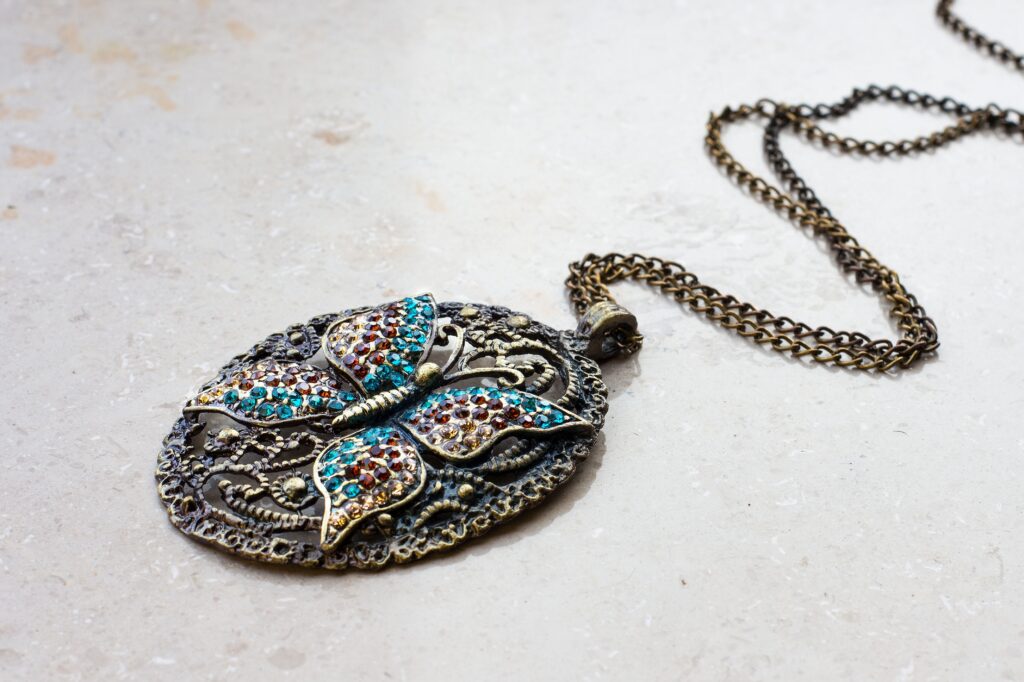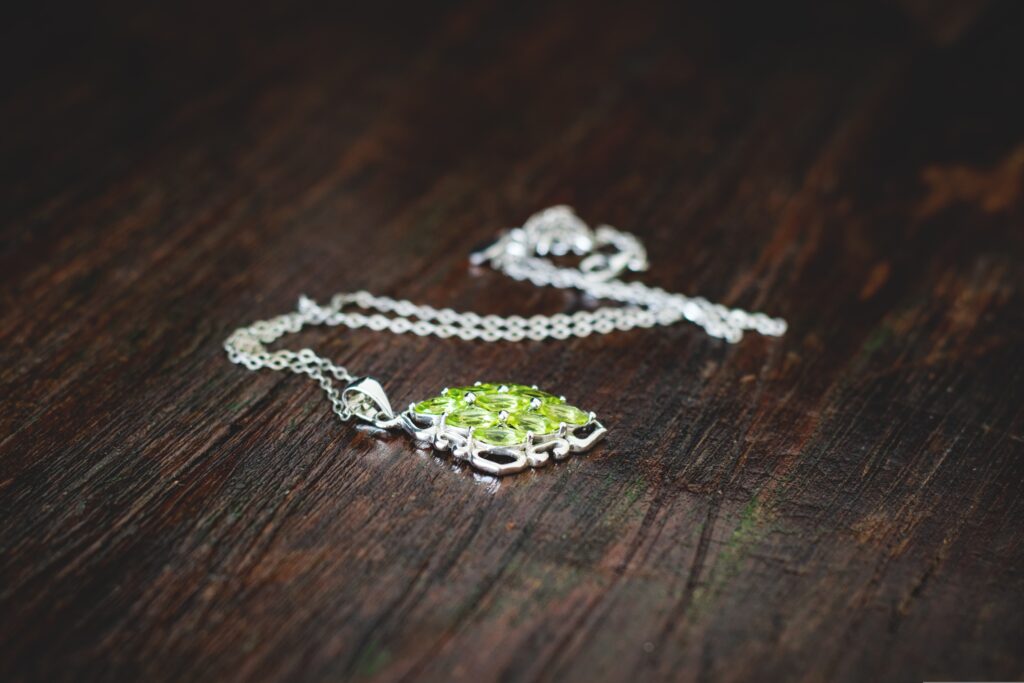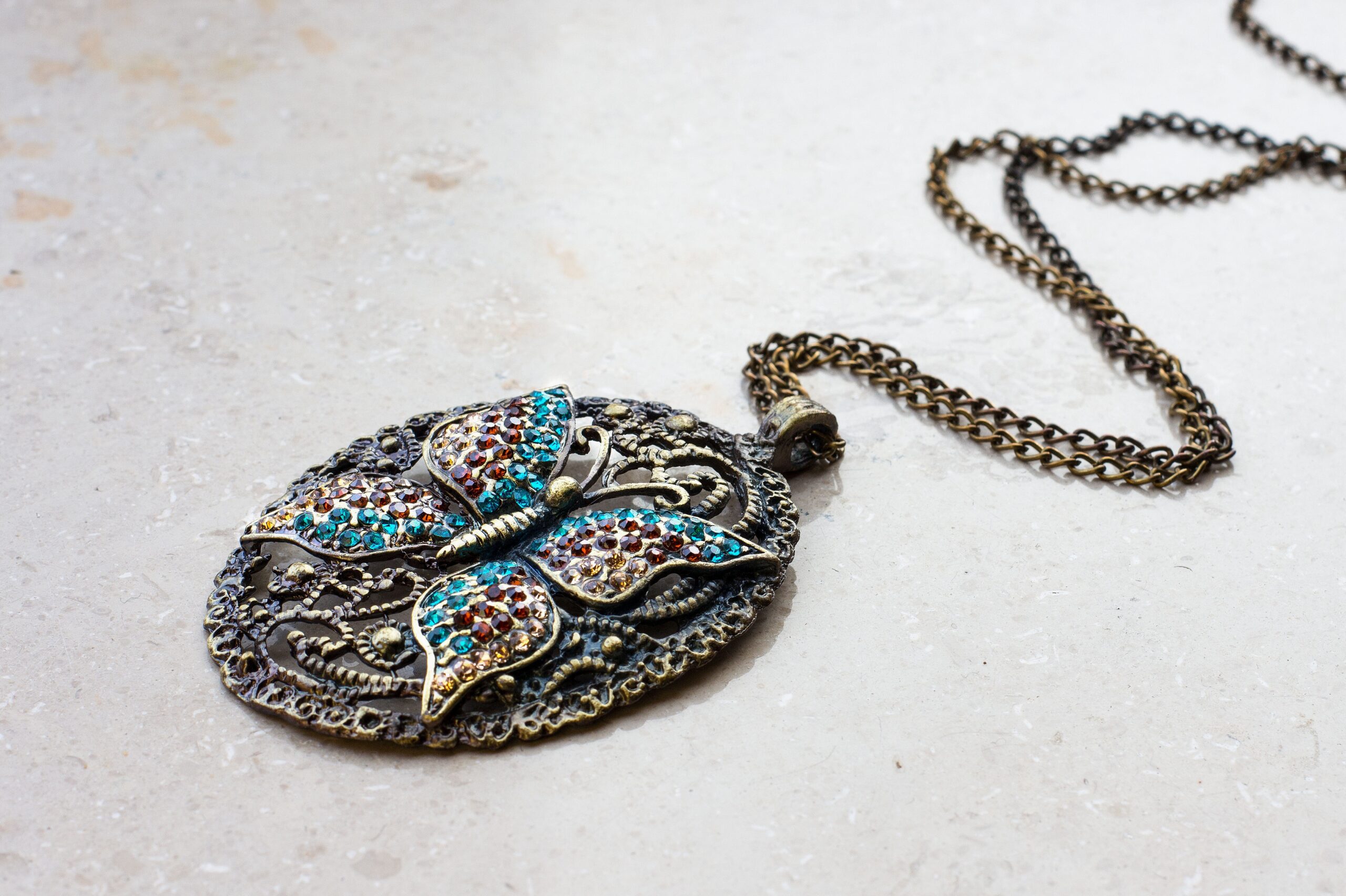As an Amazon Associate I earn from qualifying purchases.
Pendants are the perfect way to add a personal touch to your jewelry. Whether it’s a sentimental locket or a sparkling gemstone, knowing how to attach a pendant to a necklace can transform a simple chain into a stunning piece of jewelry. This guide will walk you through everything you need to know to securely and stylishly attach your pendant.
Types of Pendants
Classic Pendants
Classic pendants are versatile pieces ranging from simple designs to intricate art. They usually feature a single loop at the top for easy attachment.
Lockets
Lockets are pendants that open to reveal space for a photo or small item. They add a feel of nostalgia and can be pretty personal.
Charms
Charms are smaller pendants that often symbolize personal interests or milestones. They can be added to bracelets or necklaces for a custom look.
Statement Pendants
These are large, eye-catching pieces designed to be the focal point of a necklace. They often feature bold designs and bright colors.
Choosing the Right Necklace for Your Pendant
Chain Types
The type of chain you like can significantly impact the overall look. Popular options include cable, rope, and box chains, each offering a unique style and durability.
Length Considerations
The length of your necklace affects how the pendant sits and is showcased. Shorter chains bring attention to the face, while longer chains create a more dramatic look.
Material Compatibility
Ensure that the materials of your pendant and chain complement each other to avoid any wear or damage. For example, pairing a heavy pendant with a delicate chain can cause breakage.
Tools and Materials Needed
Basic Jewelry Tools
You’ll need a set of pliers for opening and closing rings, including flat-nose and round-nose pliers.
Pendant Bail
The bail is the connector piece that attaches your pendant to the necklace. Bails come in various styles to match different pendants.
Jump Rings
These trim rings connect the bail to the necklace. Choose the right size and thickness for security.
Pliers
Flat-nose and round-nose pliers are essential for handling jump rings and bails.

Step-by-Step Guide to Attaching a Pendant
Prepare Your Tools and Workspace
Gather all your tools and materials in a well-lit area. Ensure you have a clean, flat surface to work on.
Select the Pendant Bail
Choose a bail that fits the style and size of your pendant. Ensure it matches the material of your necklace.
Attach the Bail to the Pendant
Slide the bail through the loop or hole on the top of the pendant. You might need a different bail or a larger loop if it doesn’t fit.
Open the Jump Ring
Using your flat-nose pliers, gently twist the jump ring open. Avoid pulling it apart to maintain its shape.
Attach the Jump Ring to the Bail
Slide the jump ring through the bail’s loop, ensuring it’s securely in place.
Secure the Jump Ring
Use the pliers to close the jump ring, ensuring there’s no gap where it can come apart.
Slide the Pendant onto the Necklace
Finally, slide the pendant onto your necklace. Ensure it moves freely without coming off the chain.
Different Methods for Different Pendant Types
Using a Sliding Bail for Large Pendants
Sliding bails are ideal for more oversized pendants as they distribute weight evenly and prevent twisting.
Attaching Charms with Split Rings
Split rings work like key rings and are excellent for securely attaching small charms.
Securing Lockets with Lobster Clasps
For added security, use lobster clasps to attach lockets, preventing them from accidentally opening.
Tips for Ensuring Pendant Security
Double-Checking Connections
Double-check that all connection joints are tight and secure before wearing your necklace.
Using Thread Lockers for Extra Security
Apply a tiny thread locker to the jump ring for additional security.
Regular Maintenance Checks
Regularly inspect your necklace and pendant for any signs of wear or loosening connections.
Creative Ways to Wear Pendants
Layering Pendants
Combine multiple pendants of varying lengths for a trendy, layered look.
Mixing and Matching Styles
Experiment with different kinds of materials to create unique combinations.
Customizing with Additional Charms
Add extra charms to your necklace for a personalized touch.
Troubleshooting Common Issues
Pendant Doesn’t Sit Right
If your pendant doesn’t sit properly, try adjusting the bail or using a different chain.
Jump Ring Keeps Opening
Ensure you’re using a strong, appropriately sized jump ring and secure it tightly.
Pendant Too Heavy for Chain
Choose a sturdier chain if your pendant is too heavy for your current one.
Caring for Your Pendant and Necklace
Cleaning Tips
Clean your pendant and necklace regularly with a soft cloth and appropriate cleaner for the material.
Proper storage
keeps your jewelry dry and cool to prevent tarnishing and damage.
Handling Different Materials
Handle delicate materials like pearls and gemstones with extra care to avoid scratches and damage.
DIY vs. Professional Help
When to DIY
If you’re comfortable with basic jewelry-making techniques, attaching a pendant is a manageable DIY project.
When to Seek Professional Assistance
It’s best to consult a professional jeweler for valuable or complex pieces.

Popular Pendant and Necklace Combinations
Gold Pendants on Gold Chains
This classic combination exudes elegance and timelessness.
Silver Pendants with Leather Cords
A modern, casual look that’s perfect for everyday wear.
Gemstone Pendants on Beaded Necklaces
Create a bohemian vibe with colorful gemstone pendants and beaded necklaces.
Conclusion
Attaching a pendant to a necklace can be a simple yet transformative process. By choosing the suitable materials and following these steps, you can make a piece of jewelry that’s both beautiful and secure. So, gather your tools, get creative, and make something uniquely yours.
Amazon and the Amazon logo are trademarks of Amazon.com, Inc, or its affiliates.

